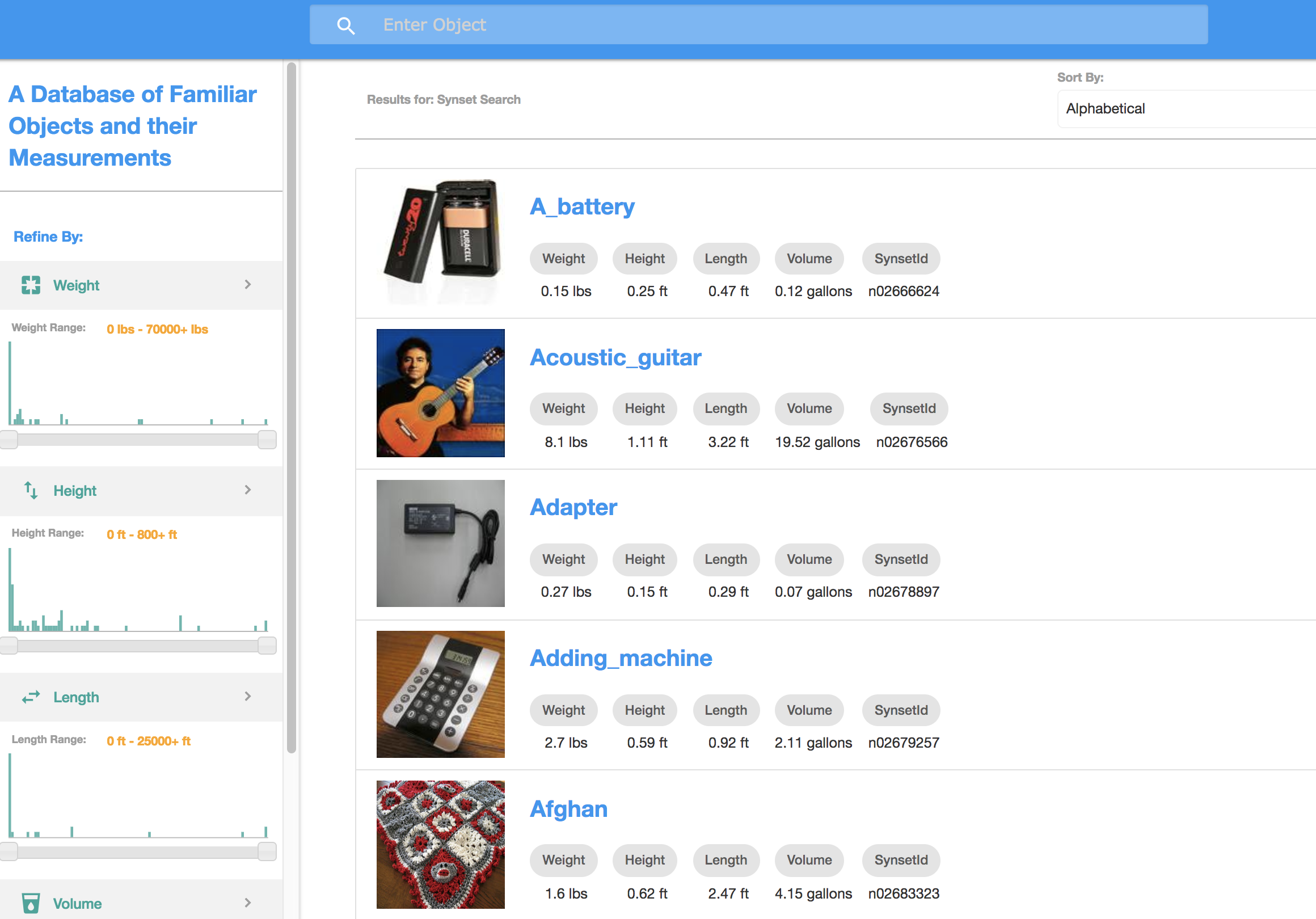Building a Database of Familiar Objects
We devise a scalable approach to mining object datasets comprised of three stages:
Identify familiar classes of objects
with WordNet, ImageNet, and crowdsourcing. We first identify criteria for effective re-expression objects like Concreteness, Countability, Rigidness, Low Measure Variance, and Familiarity.
Collect instances of the objects
from online resources like the Amazon product database and Wikipedia
Filter false positives and collect familiarity data
using crowdsourcing




